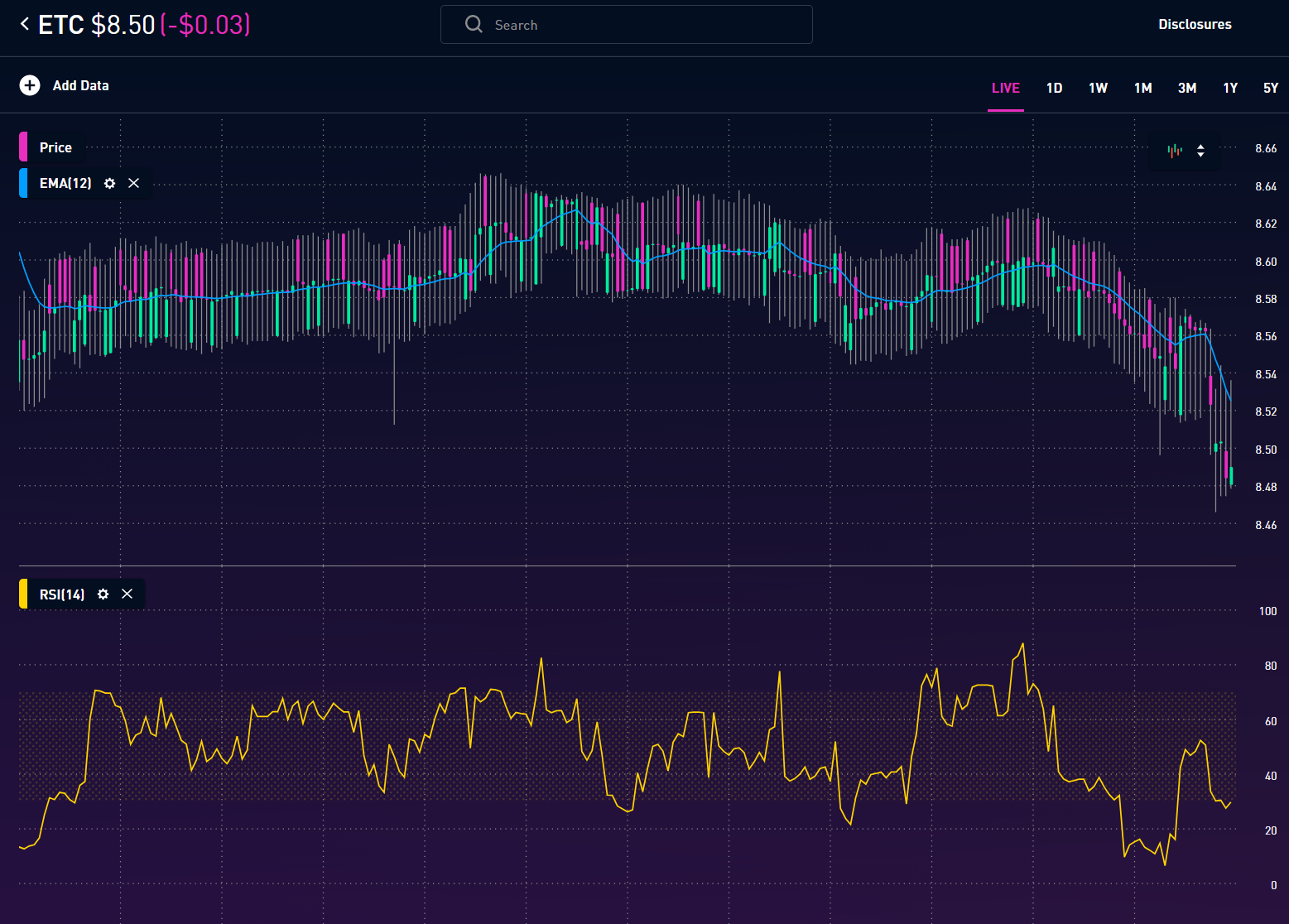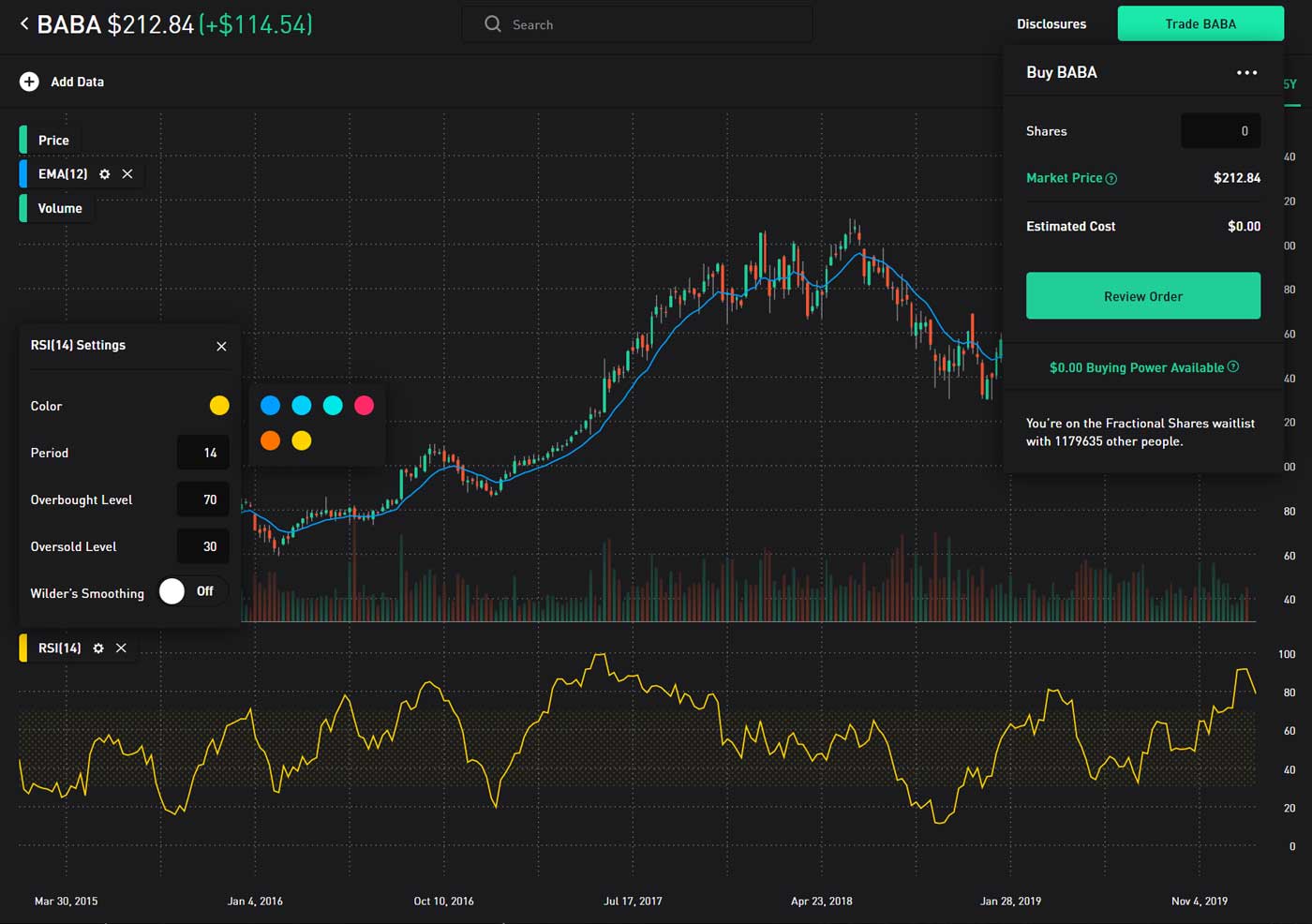Robinhood vs. DAS Trader Introduction
Robinhood and DAS Trader are almost opposites in the world of trading platforms, making for an interesting comparison. Let’s take a closer look.
Investment Products
When comparing the financial products offered by these two platforms, it's important to note a key difference: Robinhood is a full brokerage where you can hold both cash and margin accounts, while DAS Trader is an advanced trading tool used with various brokerages to enhance trading capabilities. This fundamental difference means the “products” offered by each platform are quite different.
Robinhood is a brokerage platform designed to simplify access to financial markets. You can trade
stocks, options, ETFs, and crypto. You can also set up an individual retirement account (IRA). If you’re looking for a broader range of investment options, such as mutual funds, bonds, futures, or forex, you’ll need to look elsewhere.
DAS Trader is a platform independent of any brokerage. Your access to different financial products will depend on the brokerage you use with DAS. Supported brokerages include Interactive Brokers,
Charles Schwab, Cobra Trading, Speed Trader, and more. A full list of supported brokerages can be found during the DAS Trader enrollment process.
Promotions
Robinhood: Free stock up to $200 and 1% IRA match when you open an account.
DAS Trader: Get $0 commissions + satisfaction guarantee at Charles Schwab.
Pricing
The cost of using these platforms differs significantly. Robinhood was a leader in introducing
$0 commission trades. You won’t pay any fees for stocks, options, ETFs, or crypto trades on Robinhood.
Joining is free, and there’s no minimum balance required, making it accessible to nearly everyone.
DAS Trader, on the other hand, is a subscription service, with prices typically ranging from $100 to $200 per month. Additional features are available through ‘add-ons,’ ranging from $5 to $55 each. Pricing may also vary depending on the brokerage you use with DAS.
The difference in pricing between DAS and Robinhood highlights the different audiences they target.
Platforms
Robinhood is available on iOS, Android, and through a web browser. It offers basic charting and technical analysis tools, along with news updates on various stocks, sectors, and the market in general.

Robinhood’s user interface is widely praised for being well-designed and easy to navigate. The mobile app, in particular, has a sleek and user-friendly design.
However, this simplicity comes at a cost. Advanced traders may find Robinhood’s tools lacking, with no in-depth analysis on a position’s risk profile, back-testing, or stock scanning.
Order fill times can also be slow, sometimes causing traders to miss their desired entry points, especially in volatile markets. This makes Robinhood less suitable for day trading or for those who require more complex analysis tools, where platforms like DAS Trader excel.

DAS Trader is designed for advanced, active traders who need fast order fills and real-time data. As a direct access platform, it connects directly to numerous exchanges, including NYSE, NASDAQ, AMEX, ARCA, CBOE, BATS, EDGE, CBSX, and OTC.
DAS also provides real-time data, including Level 2 quotes, which are crucial for day traders. The platform offers advanced charting with various technical indicators and risk management tools.
DAS supports developers with its own scripting language (DASScript) and support for other programming languages, allowing traders to create custom indicators, test orders, back-test strategies, and more.
It also includes chat community features, enabling users to connect with other traders in group settings or private conversations.
While the user interface may not be as sleek as Robinhood’s, DAS is geared toward experienced traders who require advanced tools. This platform is not recommended for beginners.

Mobile
Both Robinhood and DAS offer mobile apps for iOS and Android devices. Robinhood’s mobile app stands out for its design, ease of use, and overall user experience.
Robinhood’s platform is primarily mobile-based, but a web portal is also available, essentially mirroring the mobile app with no additional features.
For beginners, Robinhood’s mobile app is a great starting point in the financial markets.

DAS Trader is primarily designed for desktop use, but it does offer mobile apps for iOS and Android. The mobile app allows for order placement and provides real-time Level 2 data.
However, performance and analysis tools are more limited on mobile, and the platform’s strong suit—fast performance—can be inconsistent on mobile. DAS is best used in a desktop environment.

Extra Features
Both platforms offer some additional features. Robinhood supports individual retirement accounts (IRAs) and “instant deposits,” which allow traders to place trades immediately after making a deposit.
Robinhood also offers a wallet feature for storing and swapping various crypto tokens, along with support for decentralized ‘web3’ apps and services. This feature is new, and its long-term usefulness remains to be seen.
DAS, on the other hand, excels in its support for developers, allowing them to build custom technical tools. This feature is a standout for advanced users and is not commonly offered on other platforms. DAS’s features can vary depending on the brokerage used with the platform.
Promotions
Robinhood: Free stock up to $200 and 1% IRA match when you open an account.
DAS Trader: Get $0 commissions + satisfaction guarantee at Charles Schwab.
Which is Best for Me?
When comparing these platforms, it’s clear they serve different audiences. Robinhood aims to make financial markets more accessible and user-friendly, making it ideal for beginners and those who value a
well-designed mobile app.
DAS Trader is at the opposite end of the spectrum, designed for experienced traders who need top performance. It’s especially well-suited for serious day traders, thanks to its fast order fills and instant data access.
While both have their strengths, the choice between Robinhood and DAS Trader will likely be clear based on your trading goals and experience level. Despite their differences, both platforms have a place in the diverse world of financial markets.
|